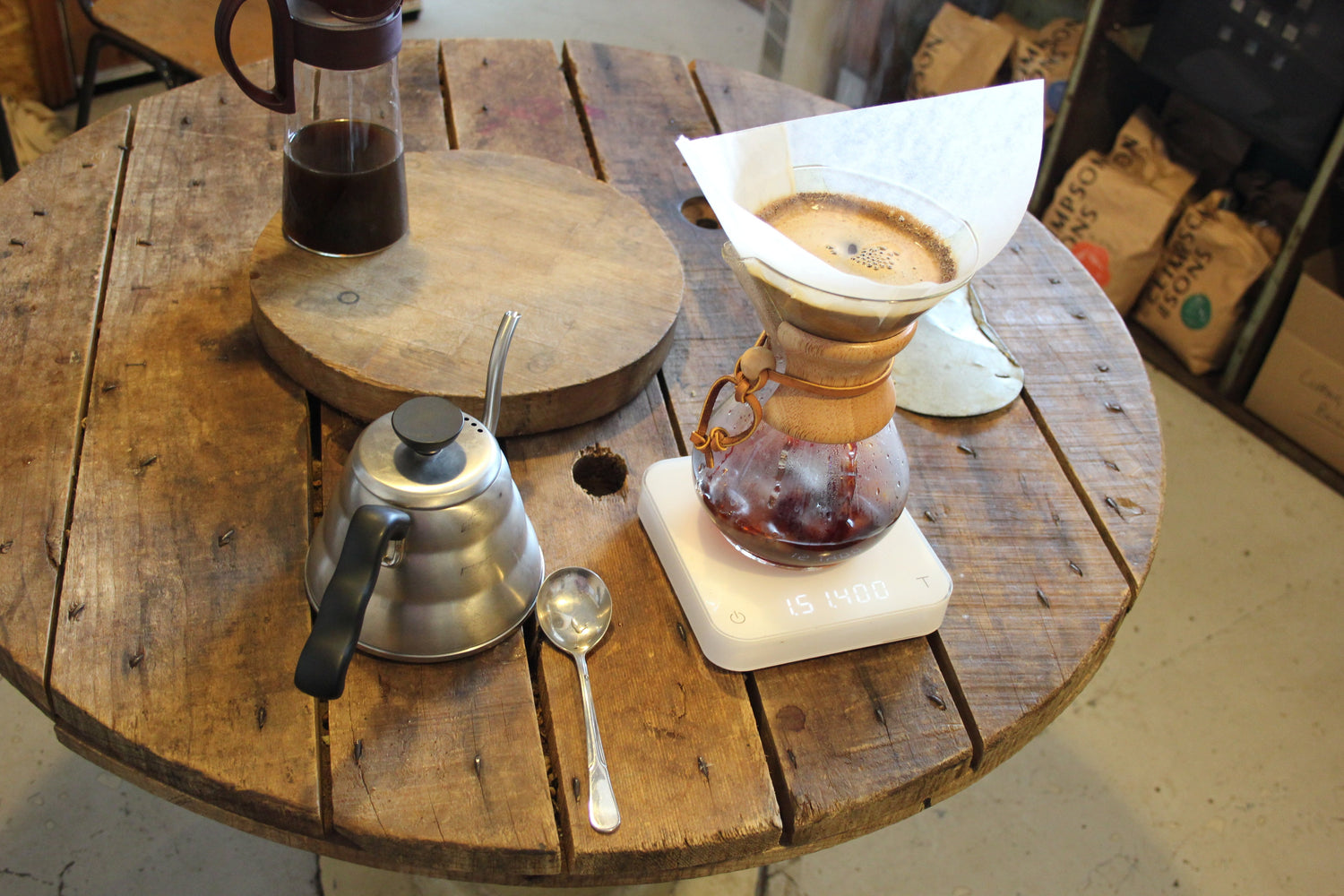We took our current Fields — a natural Ethiopian coffee that tastes like strawberries and cream and is versatile enough for pour over, espresso, or anything else you fancy, and gave it both cold brew treatments to determine which method would be victorious.
Note that the recipes below will brew a total of 600ml of coffee or one medium sized jug. If you are aiming to brew more or less coffee, simply adjust the amount of coffee grounds and water used but it is important to maintain the coffee to water ratio.
Immersion cold brew

Pros and Cons: This is the simplest method — but takes the longest amount of time to brew, meaning the cold brew will have to be prepared a few hours in advance/the night before. This method has more caffeine because the coffee has been steeped for so long - but this is also the reason this method brings out the natural sweetness in the coffee and a bolder body.
The immersion method is also much more scalable than the pour over — you can get a cold brew toddy and easily make 14 litres of the stuff if that’s your kind of party.
Method: Using your preferred immersion method i.e. cafetiere / French press or Aeropress, simply add coarse ground coffee as you would normally but add cold water instead of hot.. and wait — quite a long time.
The Perfect Cold Brew Immersion Recipe: We used the Hario Mizudashi, a cold brew coffee maker and left it in our fridge overnight for this perfect recipe. 47g of coffee, ground as coarse as possible. Use 600ml of water and chill for 12 hours.
You can also use other immersion methods like the cafetiere / French press or Aeropress. The same recipe applies. Once ready to drink you can pour over ice, drink it black or add milk.
Hot brew, over ice

Pros and Cons: This is practically instant cold brew compared to the immersion method, but requires all the equipment you’d normally use to make a great pourover, plus the ice. This method is perfect if you’re a pour over whiz anyway and you ain’t got time for none of that steeping.
Method: Add ice to the decanter or server where the coffee will drip into. Place the V60, dripper or favourite pour over method over it and commence pouring over with water as normal. The coffee freshly brewed coffee will drip over the ice, instantly chilling the coffee. As the Ice is made of… water… you will pour slightly less water over the coffee. Follow the recipe below to get the total amount of water just right. Once brewed you can enjoy your iced drink black or add milk.
The Perfect Cold Brew Pour Over Recipe: You will need 200g of ice. 400ml of water heated to 95 degrees. 45g of coffee ground at 7.8 on an EK coffee grinder, or if using another grinder simply grind to the same size as granulated sugar.
And the winner is...
Despite having used the same coffee, the two brews tasted notably different. The immersion brew was sweeter, creamier, more intense, and had a heavier body. The pour over was cleaner and crisper, more refreshing, with a lighter body.
Out of our tasters, two preferred the immersion brew and two preferred the pour over — so, inconclusive? Or maybe all cold brew is just darn delicious.
So both brews were delicious and the best brewing method for you really depends on what you want from your cold brew — if you’re looking for sweetness and body then immersion is the one, or if you are all about a crisp cup then iced pour over is the way to go. But ultimately, how quick you want that cold brew may determine which is the brew for you.



